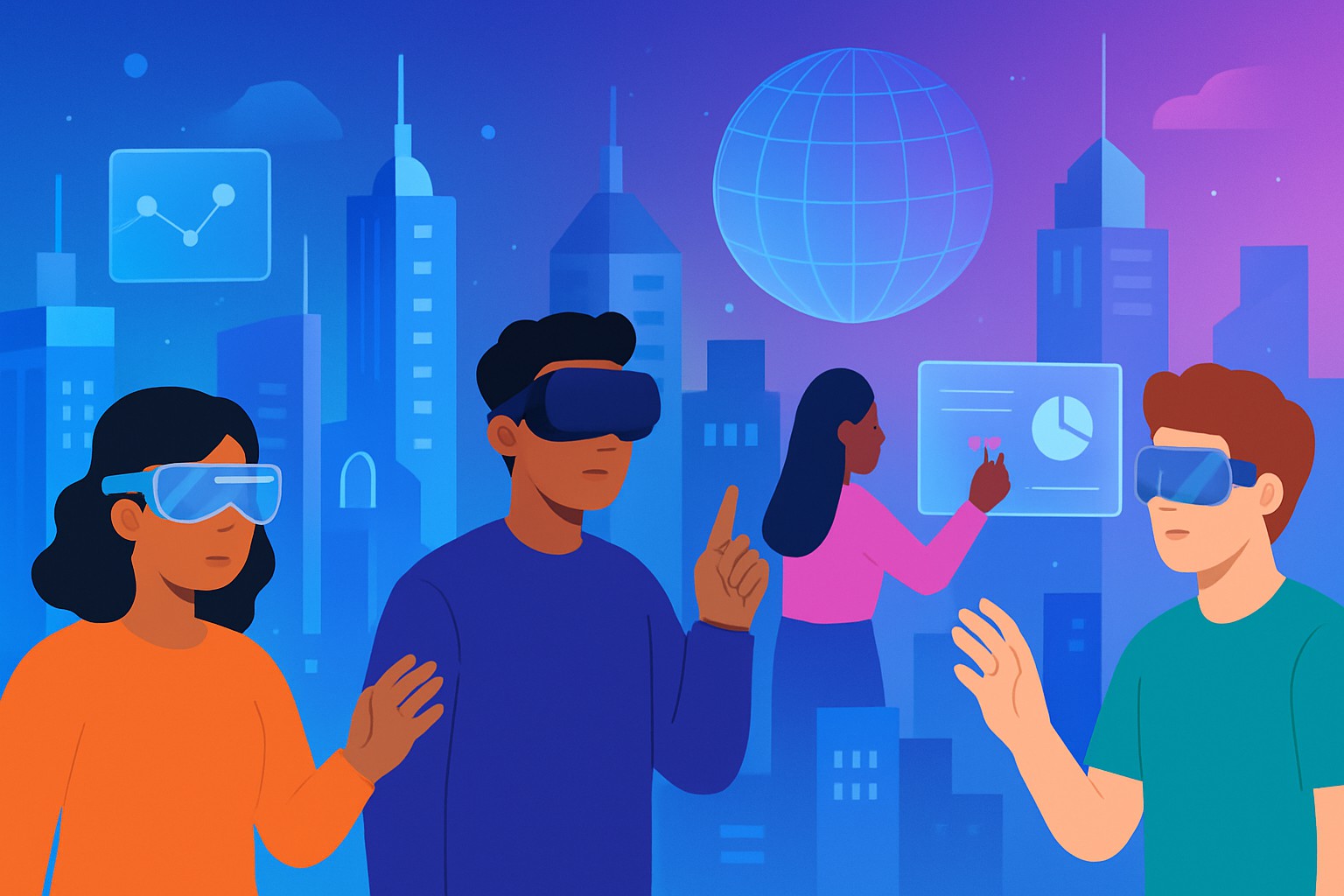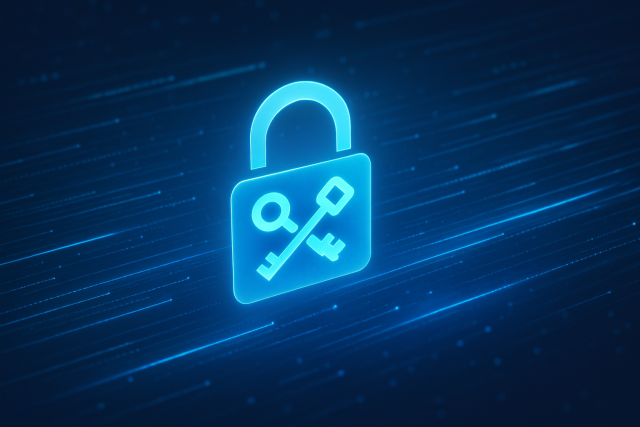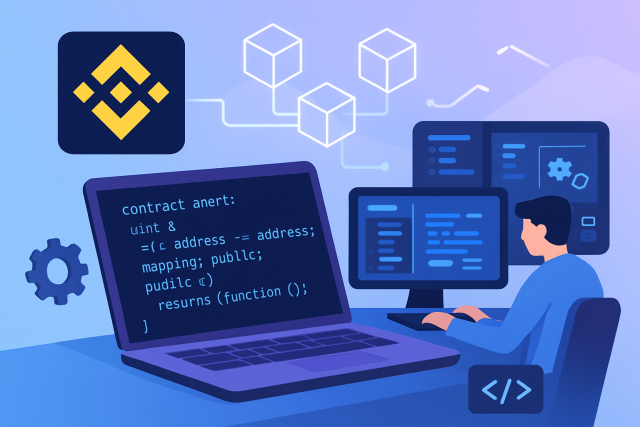What Is the Metaverse and How Does It Work?


The term metaverse keeps popping up all over tech news though it often feels tricky to pin down. Simply put, the metaverse is like a vast connected web of 3D virtual spaces where people can hang out, work, play and create—blending our physical and digital worlds in interesting ways. This article takes a friendly stroll through what the metaverse really is, dives into the tech that makes it tick and lays out what it could mean for everyday people—no geek speak required.
What Does the Metaverse Really Mean to Us?
The metaverse is basically a persistent shared 3D virtual universe that exists online like a never-sleeping digital city. It pulls together digital spaces where people can meet up, collaborate, kick back, dive into games, and craft fresh experiences side by side.
The metaverse really sets itself apart from your run-of-the-mill virtual worlds or basic augmented reality apps because it’s persistent meaning it keeps on ticking and evolving even when you’re not logged in and interoperable, so ideally you can hop around different digital spaces without losing your identity or prized digital goodies.
- Immersive 3D environments that truly draw you in and make every moment feel vivid and captivating
- Persistence means the virtual world keeps evolving even when you’ve logged off and gone about your day
- Interoperability lets users hop from one platform to another without losing their identities or precious assets
- Rich user-generated content lets people unleash creativity and tailor unique experiences
- Real-time interactions keep the social buzz alive and support everything from gaming marathons to lively collaboration sessions
The Origins and Development of the Metaverse Idea
Let's take a little stroll back to where it all began—when the notion of the Metaverse first started to take shape. It’s one of those ideas that’s been brewing quietly in the background for quite a while, evolving with each twist and turn in technology and imagination. Over time, the concept didn’t just stay stuck in science fiction books or niche tech circles; it gradually gained momentum, stirring curiosity and sparking countless dreams about what a fully realized digital universe could look like. In my experience, the story of the Metaverse is less about a sudden eureka moment and more like a slow dance between visionary thinkers, advancing tech, and the collective human thirst for connection in new, uncharted spaces.
The concept of the metaverse has actually been kicking around for quite a while now. It traces its roots back to the early visions of virtual reality and online multiplayer games from the 1990s and 2000s—those pioneering days when the internet was still finding its feet. Neal Stephenson’s 1992 novel Snow Crash really put the term "metaverse" on the map, painting a vivid picture of a digital world running parallel to our own.
Major tech players like Facebook, now Meta, along with gaming giants such as Roblox and Fortnite and blockchain projects like Decentraland and The Sandbox are all diving headfirst into building metaverse environments. These groups blend immersive visuals with bustling digital marketplaces and lively social features to bring the metaverse to life.
Key Technologies Powering the Metaverse
Let's dive into the nuts and bolts that make the metaverse tick—it's a cocktail of cutting-edge tech, each ingredient playing its part to bring this digital wonderland to life.
The metaverse experience hinges on a few key technologies working together. Virtual reality and augmented reality offer immersive ways to dive into digital worlds that feel surprisingly real. Blockchain works behind the scenes to secure ownership of virtual assets so you know what’s truly yours. Then there are high-speed connections like 5G that keep things running smoothly with barely a hiccup. This makes interactions feel almost instant. Meanwhile, advances in cloud computing, spatial computing, AI and machine learning improve realism, scalability and personalization.
- VR headsets plunge users into another world by filling their entire field of vision with computer-generated 3D images. It feels like you’ve truly stepped inside the virtual scene.
- AR glasses layer digital info or objects onto the real world. They blend physical and virtual elements so smoothly you almost forget what’s real and what’s not.
- Spatial computing acts like a smart guide helping devices recognize and map physical spaces and objects in three dimensions. It’s like giving tech a sense of spatial awareness.
- Blockchain and NFTs provide a trusty decentralized ledger to verify digital ownership of virtual land and avatars so you know what’s yours in the vast digital frontier.
- Cloud and edge computing manage the heavy lifting behind stunning graphics and real-time interactions by processing data closer to the user. This keeps things speedy and responsive.
- AI and machine learning enhance avatar behaviors, create new content, and customize experiences to fit individual tastes—almost as if the system knows you too well.
Taking a Closer Look at Virtual and Augmented Reality
Virtual reality drops users right into fully digital 3D worlds through VR headsets letting them look around and move like they would in real life only without the usual bumps and bruises. Augmented reality layers digital images or info on top of the real world using AR glasses or mobile devices.
Wrapping Your Head Around Blockchain and the Whole Digital Ownership Scene
Blockchain technology plays a key role in safeguarding digital ownership and transactions within the metaverse. Thanks to non-fungible tokens (NFTs) and cryptocurrencies, users often truly own virtual land, collectibles and avatars. This creates a decentralized economy that does not rely on any centralized platform.
Understanding the Metaverse and How People Actually Experience and Engage
Step into the metaverse by crafting or choosing a digital avatar that’s basically your stand-in. From there the fun really kicks off. You can dive into vibrant 3D worlds, hang out with others live using voice or text, jump into events or games, browse virtual shops and even get your hands dirty creating or tweaking content yourself.
Craft or pick out a personalized avatar that really captures your vibe in the metaverse.
Dive into a 3D virtual world or platform where interactive environments await your exploration.
Connect and mingle with other users right away—whether by voice, chat or gestures. Jump in and make yourself known.
Get involved in activities like gaming, attending events, shopping or working remotely. There’s something for everyone to sink their teeth into.
Have fun designing and uploading your own digital content or virtual items to enrich the world with your unique touch.
The metaverse still wrestles with interoperability – that tricky ability for users to glide effortlessly between different digital spaces without losing their avatars or sense of identity. Most platforms these days tend to do their own thing, which feels more like a patchwork quilt than one seamless immersive world. Add to that the usual suspects like graphics hiccups, lag and users’ varying hardware capabilities, and it’s clear why truly immersive interaction remains just out of reach for many.

How the Metaverse Is Making Its Mark in the Real World Today
The metaverse is already carving out practical uses across industries. Companies are hosting virtual concerts and festivals that pull in audiences from all over the world and create a vibe that is hard to beat. They also offer remote workspace solutions that turn meetings from dull video calls into something immersive and engaging. Users are snapping up virtual real estate not just to spruce up their digital digs but sometimes to turn a profit. Digital fashion brands are getting creative, crafting clothing lines for avatars that let people express themselves in this new world. Meanwhile, schools are using simulation environments for hands-on learning and training that feel surprisingly real.
- Virtual concerts and festivals pull people together in vibrant digital spaces like being at a live show without the sweaty crowd.
- Remote workspaces and meetings use 3D avatars to add warmth and personality to collaboration. It feels less robotic and more like the real deal.
- Virtual real estate lets users buy, sell and develop digital land. Think of it as the modern gold rush but all online.
- Digital fashion and goods let users add their own flavor to avatars, turning them into true digital doppelgängers.
- Education and training simulations offer hands-on learning experiences that actually stick because you’re right in the thick of it.
Common misunderstandings about the metaverse (and why they miss the mark)
There are quite a few misunderstandings floating around about the metaverse often whipped up by media hype and jargon-heavy tech talk. Some individuals jump to the conclusion that the metaverse is already fully built out and everyone’s using it, or that it’s just a fancy way of saying virtual reality headsets. Others pin it on blockchain or NFTs alone, or go as far as thinking it wants to replace the real world altogether.
- The metaverse isn’t some far-off fantasy. It’s a fully developed and widely used technology today though it’s still evolving and finding its footing.
- You might think you need to strap on a VR headset to step inside the metaverse but many platforms work just fine on your trusty mobile or desktop devices.
- While blockchain technology often steals the spotlight when people talk about the metaverse it’s really just one piece of a much bigger tech puzzle.
- Some say the metaverse will replace the physical world. However it’s more about enhancing reality than throwing the old one out the window.
- It’s not just a playground for gamers or tech whizzes. Its reach stretches far beyond to social, business, education and creative fields alike.
The metaverse today feels a lot like the early internet—a vibrant, ever-shifting landscape that is just beginning to take shape, brimming with both exciting opportunities and tricky hurdles. Getting to know it requires a good deal of patience and a pinch of imagination, trust me, it is a bit of a wild ride.
What Could the Future Possibly Hold for the Metaverse
Research and development are charging ahead at a breakneck pace. Companies and universities are teaming up to make metaverse experiences scalable and seamless. We’re on the brink of hardware that is cheaper and less clunky, alongside AI-driven avatars that feel more alive. Platforms will play nicer together and back robust digital economies and universal identities like never before. Thanks to leaps in 5G and edge computing, latency is set to plummet. This will let virtual worlds grow bigger, richer, and immersive—open to individuals from all walks of life.
As the metaverse keeps evolving it raises important questions about ethics, privacy and how to keep things properly regulated. Safeguarding users’ data and identities is going to be absolutely essential—no two ways about it. Then there’s the matter of ironing out clear guidelines for virtual behavior and transactions. This isn’t as straightforward as it sounds. Plus making sure the metaverse is truly inclusive and accessible to everyone is a challenge we simply can’t sweep under the rug.
Frequently Asked Questions
Do I need a VR headset to access the metaverse?
You don’t always need a VR headset to jump in. Sure, VR gives you that wow-factor of immersion but plenty of metaverse platforms like Roblox or Decentraland let you join the fun on your regular computer, gaming console or even a smartphone. That way it’s easier for just about anyone to get involved without breaking the bank or learning a new tech skill.
Is the metaverse just for gaming?
Not at all. Gaming definitely plays a starring role but the metaverse isn’t a one-trick pony. It hosts virtual concerts, powers remote teamwork, showcases digital fashion, offers educational simulations and even deals in virtual real estate. So whether you’re hanging out with friends, closing a business deal or exploring your creative side, the metaverse has a little something for everyone.
How does blockchain relate to the metaverse?
Blockchain, especially through NFTs and cryptocurrencies, acts like a trusty digital notary proving who truly owns virtual assets such as land, avatars and collectibles. This groundwork supports a decentralized economy where users can genuinely own, trade and take their digital stuff with them across different platforms — no middlemen needed.
Is the metaverse a single place run by one company?
Nope, the metaverse isn’t some single playground controlled by one big corporation. Think of it more like an ever-expanding network of virtual worlds crafted by different companies and communities. Today these platforms mostly run on their own turf, but the dream is to get them playing nicely together over time — kind of like a digital United Nations in the making.
How is the metaverse different from the internet we use today?
The metaverse wants to level up our online experience by creating a continuous embodied 3D space where you can interact more naturally with people and digital objects instead of just clicking through flat 2D web pages. It’s designed to be an immersive blend of social time, shopping and creativity all wrapped into one shared virtual world — kind of like stepping inside your favorite website and hanging out there.






